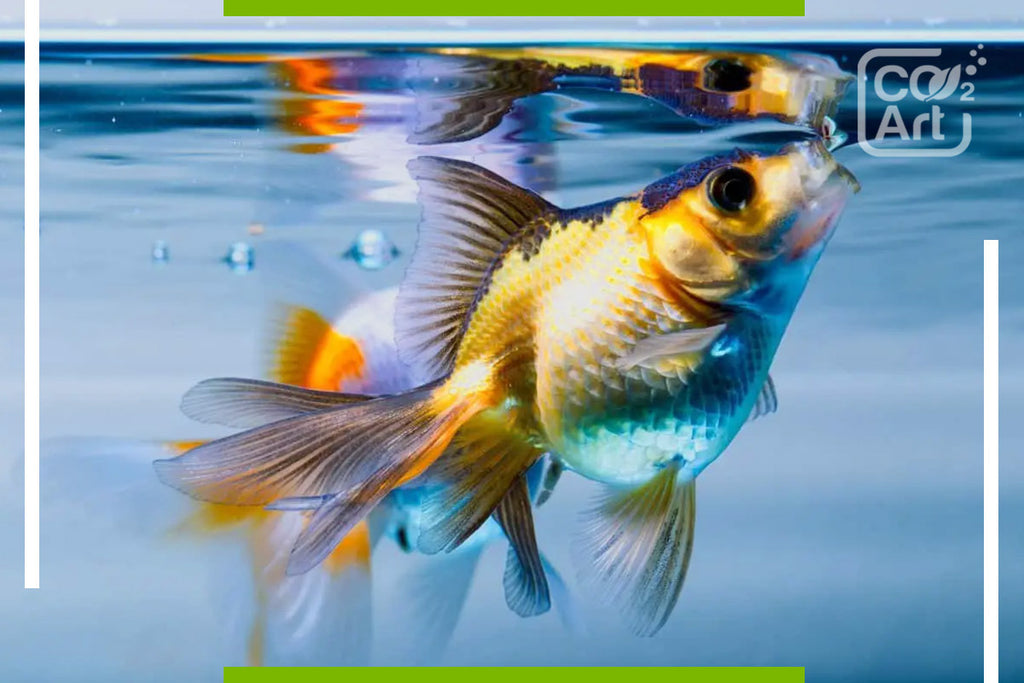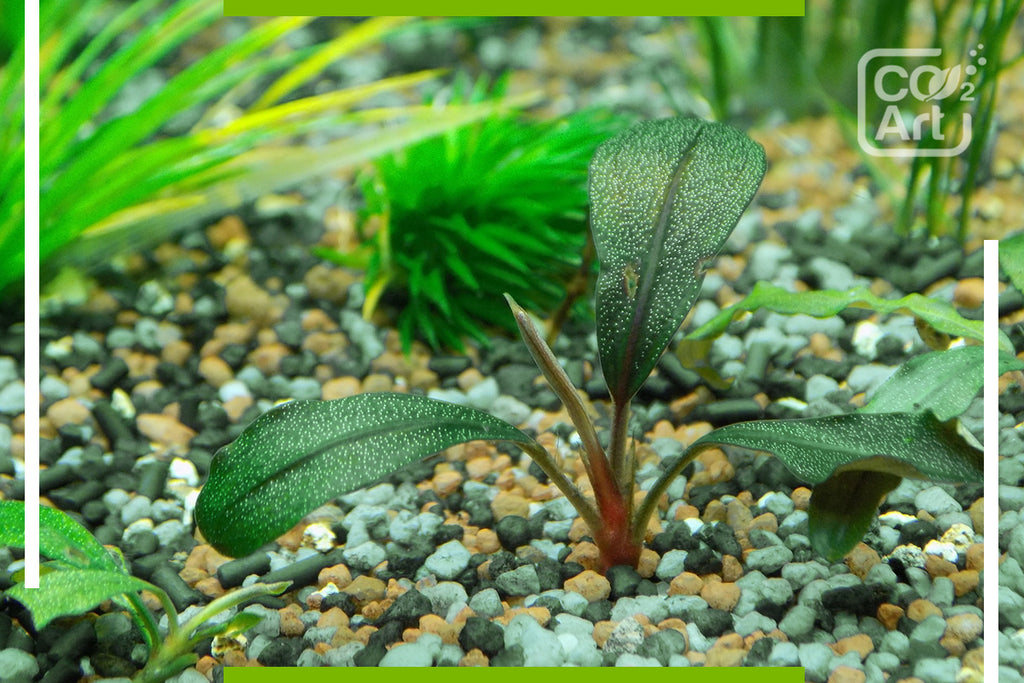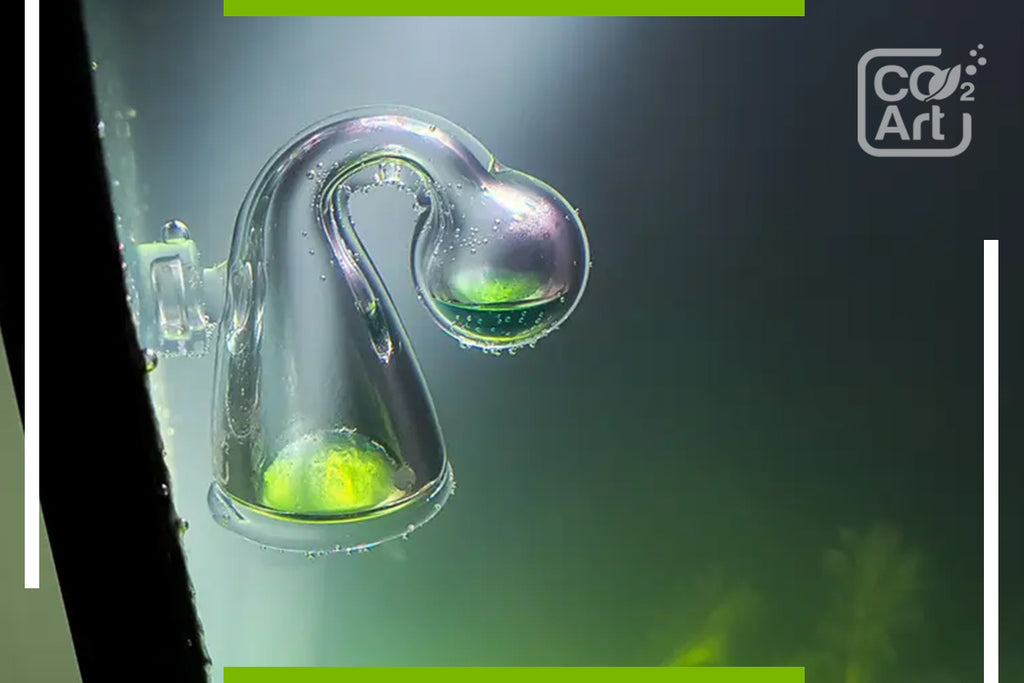What are the signs of too much CO2 in an aquarium?
Aquarium enthusiasts know that maintaining the perfect balance of elements in your tank's ecosystem is crucial. While Carbon dioxide (CO2) is essential for plant growth in a planted aquarium, too much of it can create a toxic environment for both fish and plants. In this article, we will discuss what are the signs of too much CO2 in planted tank, how to identify these symptoms, and what corrective measures can be taken to reestablish equilibrium.
Understanding CO2 in Planted Aquarium
The presence of CO2 in your aquarium is not inherently a bad thing. Aquarium plants rely on it for photosynthesis. However, an excess of CO2 is harmful, leading to poor water quality and stressed aquatic life. Therefore, it's crucial to know how to recognize too much CO2 in aquarium conditions.
Why CO2 Levels Matter
CO2 is vital for plants but toxic in high concentrations for fish and other aquatic life. Overdosing CO2 can lead to fish struggling to breathe and plants taking in more nutrients than they need. Hence, understanding the too much CO2 symptoms can mean the difference between a thriving tank and a disaster.

Signs in Fish's behavior
All the fish are generally the first to react to high levels of CO2. Aquarium fish may become sluggish, linger near the surface of the water where oxygen is more abundant, and some fish species display rapid gill movements. In more extreme conditions, you might even witness fish loss due to suffocation. Therefore observing fish behavior is obligatory when using CO2 injection. All we want is to keep our fish healthy, don't we?
Signs in Aquatic Plants
High levels of CO2 also affect aquarium plants. While aquatic plants use CO2 for photosynthesis, excessive amounts can lead to nutrient imbalances. The signs of too much CO2 in plants include discoloration, weak stems, and slow growth, depending on the plant species. Most underwater plants may react drastically if the balance is immediately stopped.

The Dangers of Elevated CO2 Levels
Having too much CO2 levels in the tank is harmful for several reasons. It can drastically lower the pH of the water, making it more acidic. This can affect the health of the plants and fish, leading to slow growth and even death.
Importance of Monitoring
Regular monitoring of CO2 levels is essential. One popular method is using a CO2 drop checker. This device helps in providing a visual representation of the CO2 levels in your tank. The color of the liquid in the checker changes according to the amount of CO2 in the water, offering a simple yet effective way to keep track.
Advantages of a CO2 Drop Checker
CO2 drop checkers are especially advantageous in planted aquariums. They provide a continuous, at-a-glance indicator of your tank's CO2 levels, ensuring that you maintain just the right amount needed for optimum and healthy plant growth without jeopardizing fish health.

Dual-Stage Construction
Another recommended device for serious aquascapers is a dual-stage CO2 regulator. Its advanced design minimizes the risk of end tank dump, a hazardous event where a sudden spike in CO2 occurs, by maintaining a consistent output pressure, irrespective of the tank's internal pressure.
What Happens When CO2 Levels Spike?
When CO2 levels suddenly rise in your aquarium, it's usually a cause for concern. Elevated levels of CO2 can cause immediate stress to fish, manifesting as erratic swimming patterns or gasping for air at the surface. For plants, too much CO2 may result in a sudden burst of growth, but this is often unsustainable and can lead to longer-term health issues for the plants.
Oxygen and CO2: The Balancing Act
One of the complexities of managing an aquarium is balancing the levels of oxygen and CO2. Excessive CO2 can displace the oxygen, leading to a lack of this vital gas for your fish. On the other side of the spectrum, low levels of CO2 can hinder plant growth. Striking the right balance is critical for a thriving aquatic ecosystem.
CO2 and pH Levels
An often overlooked consequence of excessive CO2 is its impact on the water's pH levels. Carbon dioxide, when dissolved in water, forms carbonic acid. A sudden spike in CO2 will decrease the pH of the water, making it more acidic. Acidic water can stress both plants and fish, leading to diseases or even death in extreme cases.
How To Control CO2 Levels?
CO2 levels can be regulated in several ways. The most reliable method is using a CO2 regulator with a solenoid valve that allows you to set the CO2 injection rate precisely. Alternatively, you can use air stones or increase water agitation to help dissipate excess CO2.
Carbon Dioxide and Water Circulation
Effective water circulation can help distribute CO2 evenly throughout the tank. Poor circulation can cause CO2 to accumulate in certain areas, causing localized high levels that can be harmful to fish and plants. Make sure you have a good filtration system and consider a water pump for larger tanks.
Importance of Regular Testing
Just like you wouldn't drive a car without a functional dashboard, you shouldn't manage an aquarium without regular testing. Test kits for pH levels and CO2 concentrations are readily available and are an essential part of aquarium management. Coupled with a CO2 drop checker, you'll have a comprehensive overview of your tank's condition.
What To Do in Case of CO2 Overdose?
If you notice signs of excessive CO2, immediate action is crucial. Turn off the CO2 supply, increase aeration, and consider doing a partial water change. Observe your fish and plants closely for the next few hours, as some symptoms may be delayed.
Investing in Quality Equipment
For those who take aquarium keeping seriously, investing in quality equipment is non-negotiable. Brands like CO2Art offer reliable CO2 regulators that come with dual-stage construction, providing consistent and safe CO2 injection. This is crucial in preventing the dreaded end tank dump, which could otherwise result in a disastrous spike in CO2 levels.
In Conclusion
Too much CO2 in your aquarium is detrimental to its inhabitants. Regular monitoring and employing aids like CO2 drop checkers and dual-stage CO2 regulators can go a long way in maintaining a healthy aquatic environment. So keep a vigilant eye and act swiftly if you notice any signs of CO2 overdose. Understanding the signs of low and high CO2 levels is crucial for maintaining a healthy aquarium. High-quality equipment, regular testing, and close observation can go a long way in ensuring that your aquatic pets and plants thrive. Remember, balance is key, and nothing replaces the value of constant vigilance and timely action.




